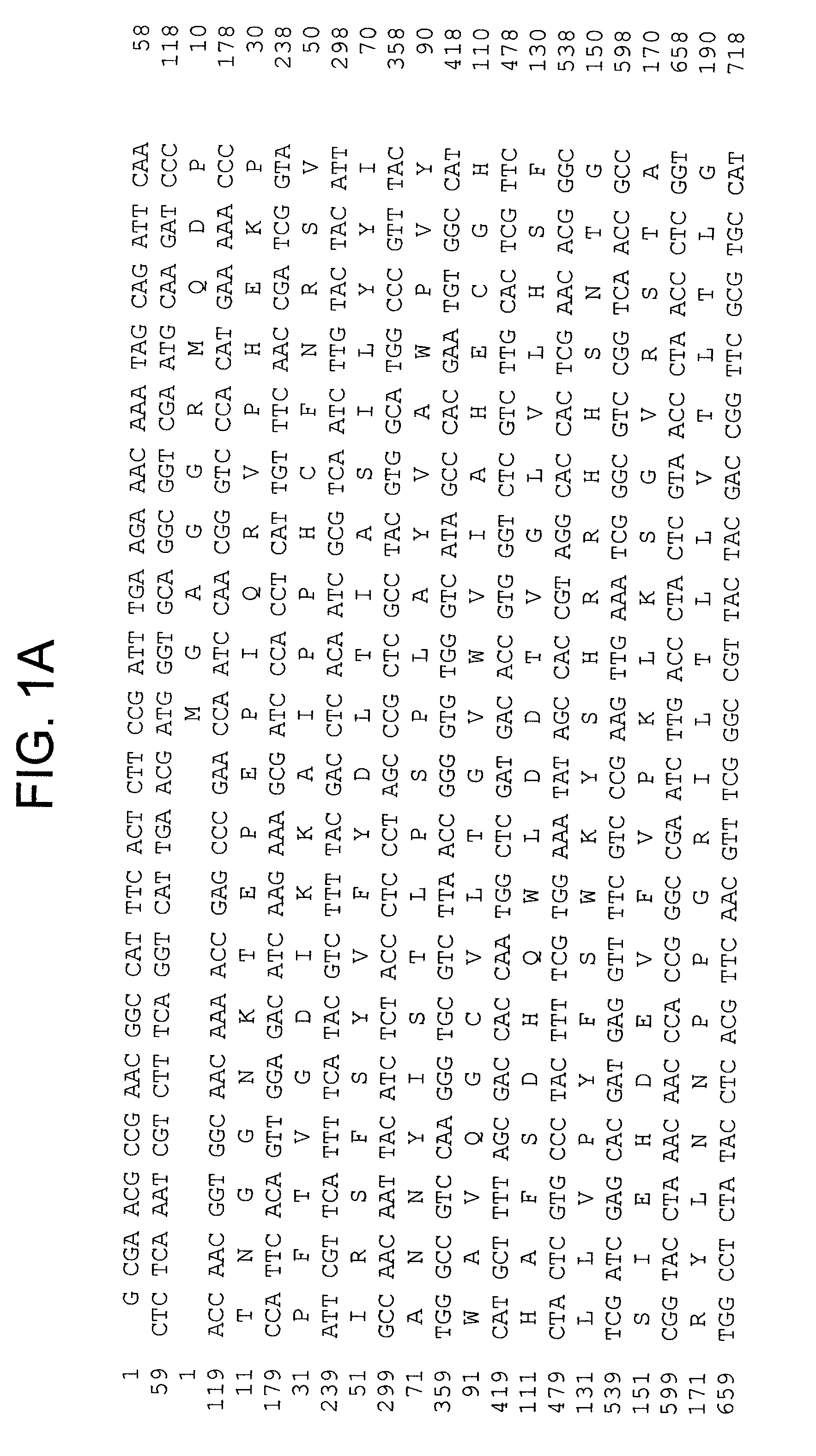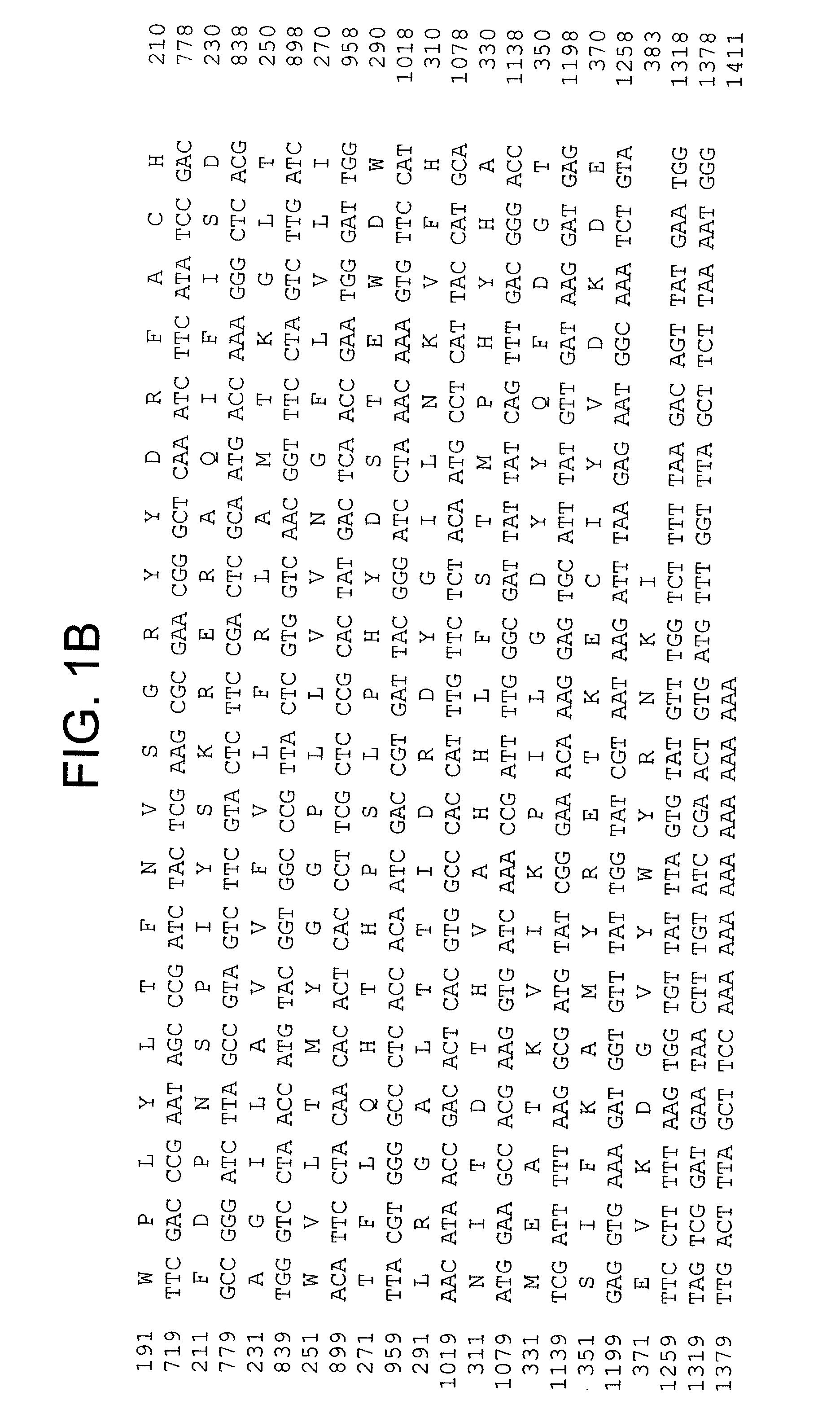Production of conjugated linoleic and linolenic acids in plants
a technology of conjugated linoleic acid and plant, which is applied in the field of conjugated linoleic and linolenic acid production in plants, can solve the problems of low content, high heterogeneous composition of products derived from chemical processes, and no rich natural source of fatty acids, etc., and achieves low cost, low side effects, and efficient way to produce biological compounds.
- Summary
- Abstract
- Description
- Claims
- Application Information
AI Technical Summary
Benefits of technology
Problems solved by technology
Method used
Image
Examples
example 1
Linoleic Acid is the Precursor of Calendic Acid
[0092] Calendula officinalis is an annual flowering plant that can accumulate a significant amount of calendic acid in its seeds. In order to obtain the molecular information underlying the biosynthesis of calendic acid, the fatty acid profiles of the seeds, leaves and flowering buds of Calendula officinalis was analyzed.
[0093] Table 1 is the fatty acid composition of lipids isolated from full-expanded leaves, unopened flower buds and mature seeds. Calendic acid is a major fatty acid of the lipids in the seeds that accounts for more than 46% of the total fatty acids. Following calendic acid is linoleic acid, which comprises approximately 34% of the total fatty acids in the seeds. Oleic acid accounts only for 4%. A trace amount of CLA (8,10-18:2) was also found in the seeds. Calendic acid was not present in either leaves or flower buds. However, linolenic acid is a major fatty acid that accounts for 43% of the total fatty acids in leaves...
example 2
Identification of CoFac2 and CoFad2
[0095] To identify genes encoding conjugated double bond-forming enzymes in C. officinalis, a PCR-based cloning strategy was adopted. Sequencing of PCR products revealed three types of inserts related to desaturases. One had high sequence similarity to .omega.-3 desaturases (FAD3). The other two shared amino acid sequence similarity to various .DELTA.12 desaturases (FAD2) and related enzymes, such as an acetylenase from Crepis alpina.
[0096] To isolate full-length cDNA clones, the two types of Fad2-like inserts were used as probes to screen a cDNA library from developing seeds, which resulted in identification of several cDNA clones in each group. Sequencing identified two unique full-length of cDNAs, CoFad2 and CoFac2. CoFad2 is 1411 bp and codes for 383 amino acids with molecular weight of 44 kDa (FIG. 1 and SEQ ID Nos: 3 and 4). CoFac2 is 1301 bp in length and codes for 374 amino acids with molecular weight of 43.6 kDa (FIG. 2 and SEQ ID Nos: 1 a...
example 3
Characterization of CoFac2 and CoFad2
[0099] Northern blot analysis indicated that the CoFac2 was exclusively expressed in the developing seeds of C. officinalis (FIG. 5). It was not expressed in vegetative tissues such as leaves, and reproductive tissues such as flower buds. In contrast, CoFad2 was expressed in all tissues tested such as leaves, flower buds and developing seeds, but preferentially in flower buds and developing seeds. Expression patterns of the two genes were consistent with the pattern of calendic acid accumulation, which occurs only in seeds. As set forth in Example 1, above, in C. officinalis calendic acid accumulated only in seeds, whereas linoleic acid, the product of the .DELTA.12 desaturase (CoFAD2) was present in all three tissues examined although the flower buds and developing seeds contain a higher amount linoleic acid (see Table 1).
PUM
| Property | Measurement | Unit |
|---|---|---|
| temperatures | aaaaa | aaaaa |
| temperatures | aaaaa | aaaaa |
| temperatures | aaaaa | aaaaa |
Abstract
Description
Claims
Application Information
 Login to View More
Login to View More - R&D
- Intellectual Property
- Life Sciences
- Materials
- Tech Scout
- Unparalleled Data Quality
- Higher Quality Content
- 60% Fewer Hallucinations
Browse by: Latest US Patents, China's latest patents, Technical Efficacy Thesaurus, Application Domain, Technology Topic, Popular Technical Reports.
© 2025 PatSnap. All rights reserved.Legal|Privacy policy|Modern Slavery Act Transparency Statement|Sitemap|About US| Contact US: help@patsnap.com



